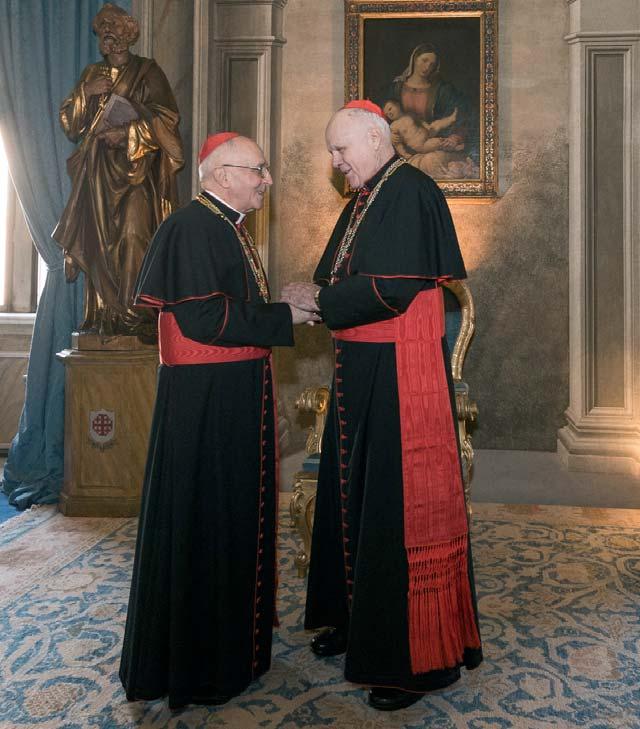
27 minute read
Dossier : Cardinal Fernando Filoni, 9 th Grand Master of the Order
from 2019 Jerusalem Cross
by EOHSJ-NCL
Cardinal O’ Brien’s total and fraternal support for his successor
Advertisement
By decision of the Holy Father, His Eminence Cardinal Fernando Filoni has been appointed Grand Master of the Order of the Holy Sepulchre starting December 8 2019, Solemnity of the Immaculate Conception. We publish below the official communiqué of His Eminence Cardinal Edwin O’Brien, Grand Master of the Order since 2012, who concluded his mandate a few months after reaching the age of 80.
“It is with complete acceptance and appreciation that I welcome the decision of Pope Francis to replace me as Grand Master of the Equestrian Order of the Holy Sepulchre of Jerusalem. I am especially pleased that His Holiness has appointed His Eminence Fernando Cardinal Filoni as my successor.
I have been privileged well beyond the time of my letter of resignation, submitted over five years ago. Throughout my more than eight years as Grand Master, my personal faith and love of our Church have deepened as I have witnessed our members’ commitment to the goals of our Order, expressed in different cultures and languages, all profoundly Catholic!
I am most grateful to the two Governors General with whom I have served, Their Excellencies, Professor Agostino Borromeo and Ambassador Leonardo Visconti di Modrone. Our collaborators in the Grand Magisterium and the daily, dedicated service of our office staff largely
account for the steady growth of our Order. Their commitment to our lieutenancies and to the mission of the Latin Patriarchate has been unwavering.
Finally, I welcome His Eminence, Cardinal Filoni as Our Grand Master. His long and broad pastoral and administrative experience in service to the Universal Church will be precious assets as he leads our Order into the future. I offer him my full and fraternal support as I beg the continued intercession of Our Lady of Palestine.” Edwin Cardinal O’Brien
Cardinal Fernando Filoni’s Biography
Cardinal Fernando Filoni was born on 15 April 1946 in Manduria (Taranto, Italy), but at an early age, his family moved back to their town of origin, Galatone (Lecce). He attended middle school in the minor seminary of Nardò before completing his high school studies in Molfetta at the Pugliese Regional Seminary Pio XI and theology studies in Viterbo at the Seminary Santa Maria della Quercia.
Monsignor Antonio Rosario Mennonna, Bishop of Nardò, ordained him a priest on 3 July 1970 in Galatone. He attended the Pontifical Lateran University, where he obtained a degree in canon law, and the La Sapienza State University, where he graduated in philosophy. He then pursued further studies at the Pro Deo (now known as the Free International University of Social Studies – LUISS) earning a postgraduate diploma in Political and Social Sciences, specializing in journalism. During this period in Rome, he served as an assistant parish priest, focusing in particular on the education of young people and teaching at the classical high schools Vivona and Socrates.
At the end of his studies, the then Cardinal Vicar of Rome, Ugo Poletti, proposed that he enter the Pontifical Ecclesiastical Academy. On 3 April 1981, he received his first diplomatic posting to Sri Lanka. After three years, he was sent to Iran (1983-1985). Later he was called to the Secretariat of State to follow relations with international organizations. In 1989, he was sent to Brazil until 1992, when he was formally accredited in the Philippines as a Cultural Attaché, with residence in Hong Kong, where the
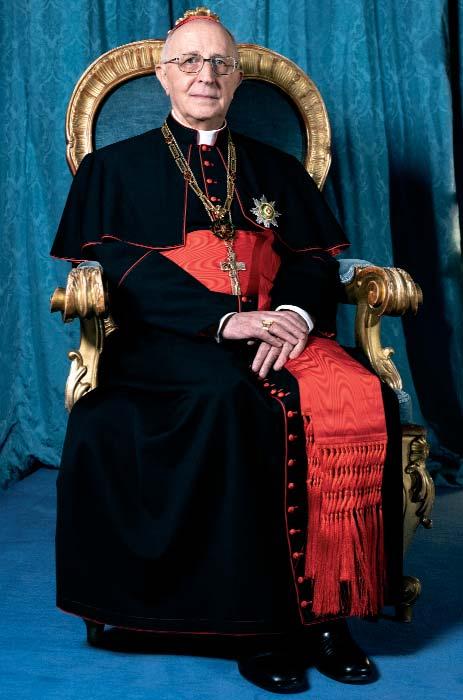
Holy See had opened a Study Mission to closely follow the situation of the Church in China.
On 17 January 2001, he was elected to the titular see of Volturno, with the dignity of Archbishop, and appointed Apostolic Nuncio to Jordan and Iraq. He received episcopal ordination from Pope John Paul II in the Vatican Basilica on March 19, 2001.
In Baghdad (2001-2006), he was Nuncio during the last two years of Saddam Hussein’s regime, then during the war and in the following three years, until 25 February 2006, when Benedict XVI appointed him Pontifical Representative in the Philippines (2006-2007).
On 9 June 2007, he was appointed Deputy for General Affairs of the Secretariat of State.
On May 10, 2011, Pope Benedict XVI appointed him Prefect of the Congregation for the Evangelization of Peoples, creating him a Cardinal Deacon on February 18, 2012, of Our Lady of Coromoto in St. John of God. On June 26, 2018, the Holy Father Francis designated him to the Order of Bishops.
On December 8, 2019, Pope Francis appointed him Grand Master of the Equestrian Order of the Holy Sepulchre of Jerusalem and emeritus of the Congregation for the Evangelization of Peoples.
He has authored many texts, including the book “The Church in Iraq”, translated into various languages.
He is a member of diverse Congregations including the Congregation for the Cause of Saints, to which he was nominated by Pope Francis on February 1, 2020.
The new Grand Master is welcomed to Palazzo della Rovere
On January 16 the Order’s new Grand Master, Cardinal Fernando Filoni, accompanied by the Governor General, Leonardo Visconti di Modrone, was officially welcomed to Palazzo della Rovere, the Rome headquarters of the Grand Magisterium, during a ceremony in which his predecessor Cardinal Edwin O’Brien participated.
The dignitaries of the Order received the Grand Master at the entrance and accompanied him to the Hall of Throne where he greeted the members of the Grand Magisterium present. Cardinal O’Brien subsequently spoke some words of welcome, assuring his successor the faithful and enthusiastic support of all the Knights and Dames worldwide. “Our noble Order thanks the Lord and
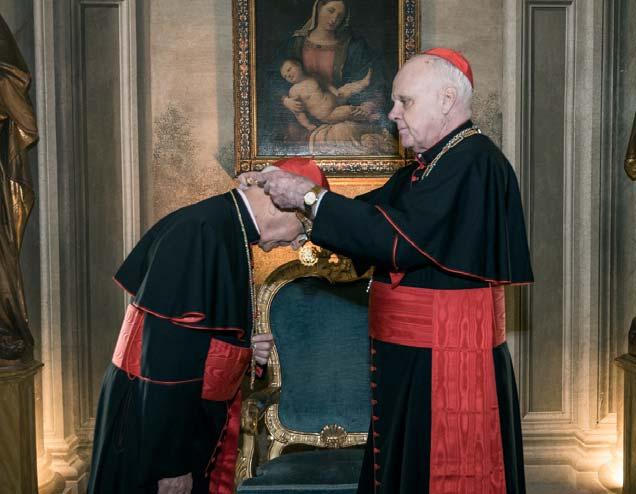
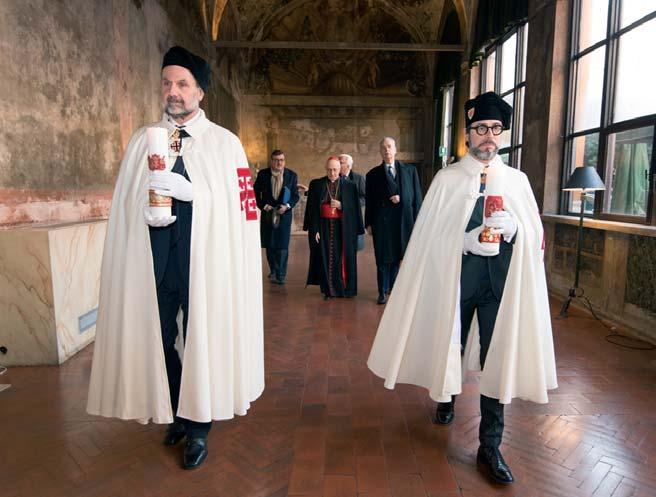
certainly our Holy Father for granting us the privilege of having you as our new guide! You represent a true blessing for our Order,” he concluded.
Before delivering his first public speech in his role as Grand Master, Cardinal Filoni received Investiture within the Order from the hands of his predecessor who placed the Knight of the Collar insignia on him. After this ceremony, His Eminence was able to personally meet all the staff members, before going to the chapel for a moment of silent prayer in the company of Cardinal O’Brien.
Cardinal Fernando Filoni received the Knight of the Collar insignia from the hands of his predecessor, Cardinal Edwin O’Brien, during a ceremony held in Rome at the Palazzo della Rovere on January 16, 2020.
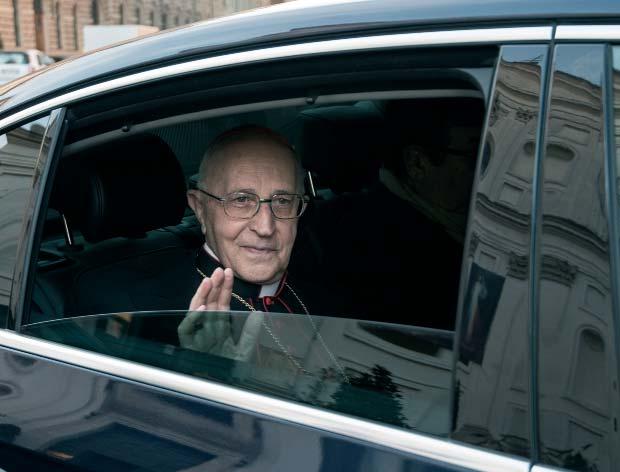
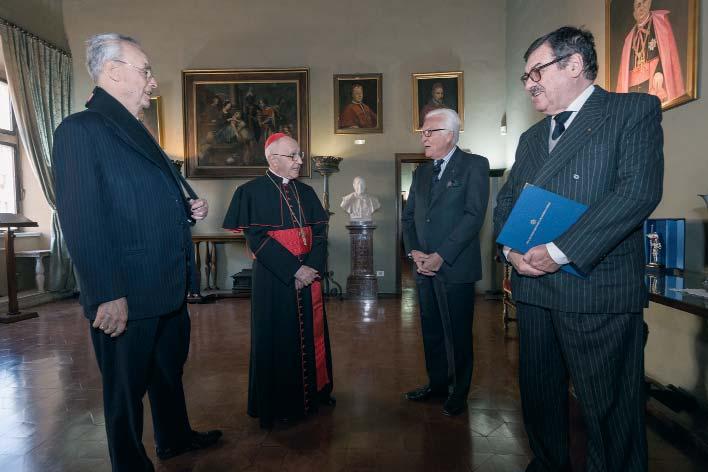
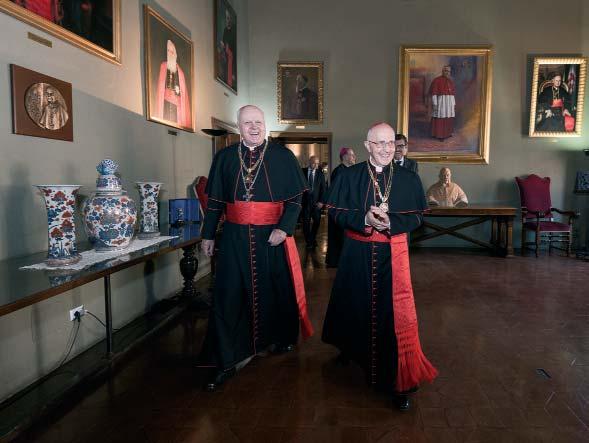
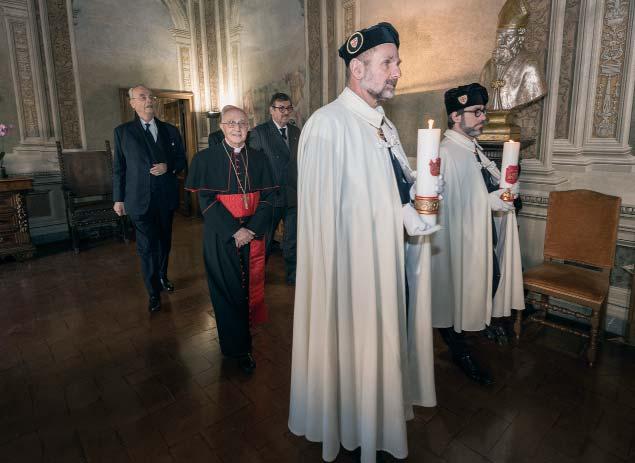
Official welcome of Cardinal Fernando Filoni to the Palazzo della Rovere on January 16, 2020.
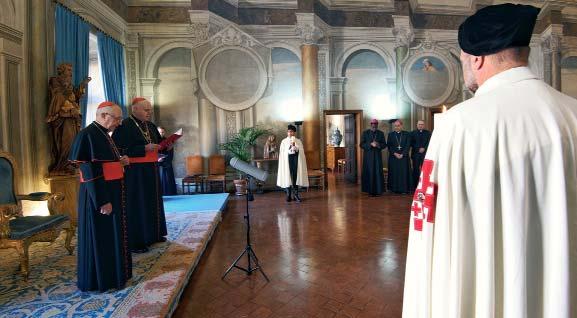

The new Grand Master’s first address
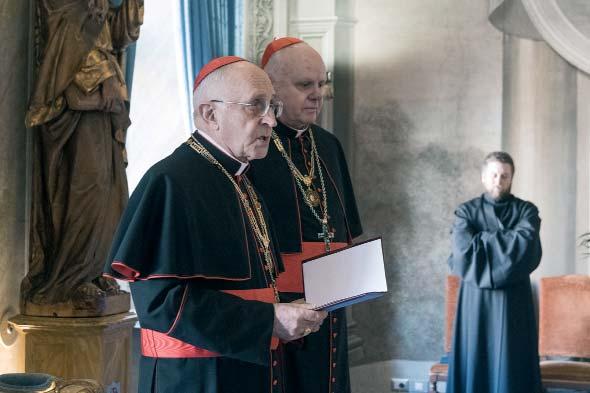
“If you knew the gift of God” (Jn 4:10)
This expression is taken from the Gospel of John.
Jesus finds himself in the village of Sicàr, in Samaria; along the road there is a well, the one that Jacob had given to his son Joseph. The well recalls a sepulchre in which life, water, which must be drawn, is hidden.
Tired, Jesus sees a woman busy fetching water and asks her for a drink.
This is a common scene in regions where water does not flow to the surface and must be drawn from underground.
In the dialogue that opens up between Jesus and the Samaritan woman, Jesus tells her that, besides natural water, there is ‘other’ water, coming from “a spring of water welling up to eternal life” (Jn 4:14), just as Jesus says he has ‘other’ food, “that you know nothing about” (Jn 4:32), this in reference to the food that the disciples had gone to buy in the village; Jesus then meets the inhabitants of Sicàr, who will recognize him as “the Saviour of the world” (Jn 4:42). This in short is the story of the evangelist John.
This episode of the life of Jesus which I mention allows me to encapsulate the meaning of the service to which the Holy Father has destined me; to give meaning to being with you, to belonging today to the large family of the Equestrian Order of the Holy Sepulchre of Jerusalem. I could say that I am almost the parish priest of this great ‘Parish’ spread across the continents.
We all need to draw on the “depths” – a Pauline term – of that mystery of grace that allows us to “know this love that surpasses knowledge” (Eph. 3:18-19).
Today we begin a new chapter in the history of the Order; a history full of events and gestures that have ennobled it.
I renew my gratitude to the Most Eminent Cardinal Edwin O’Brien for the duty he has fulfilled with competence and generosity at the helm of the Order. Thank you your Eminence!
I greet those present: His Excellency, Mons. Tommaso Caputo, the Grand Magisterium, His Excellency, Mons. Franco Croci, Grand Prior of the Lieutenancy for Central Italy, Lieutenant General of Honour, H.E. Prof. Giuseppe Dalla Torre del Tempio di Sanguinetto and all of the staff. The new Grand Master together with Professor Agostino Borromeo, Lieutenant General, and Ambassador Leonardo Visconti di Modrone, Governor General of the Order of the Holy Sepulchre.
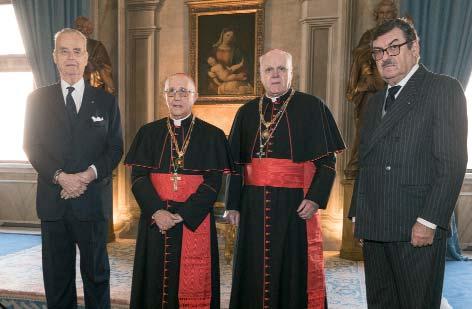
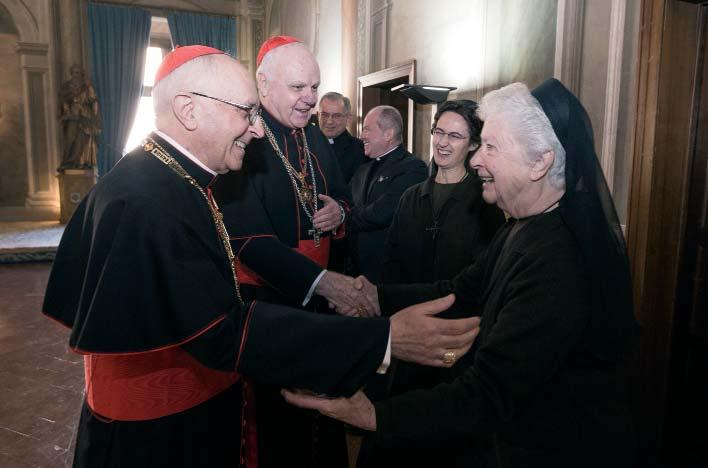
I wish to assure you of my commitment to the Order and offer my encouragement to you all. In order to journey together, we need together to ask Christ for the gift of “his” water and “his” food so that our journey and that of every Knight and Dame, be faithful to the “vocation” and “ministry” that we are committed to.
As Knights and Dames, we all know we have a mission to carry out; we must live up to the ‘noble ideal’ which the very nature of our institution requires of us. But the ‘nobility’, the honour to which I refer does not come, as Saint Gregory of Nazianzus, Bishop and Doctor of the Church says, from the “titles of our parents or from their life’s work, rather from being and calling ourselves Christians” (Discourses 43, 19-21).
The commitment undertaken, in truth, comes from that empty Sepulchre, that is, from the Resurrection of Christ from which all profound knowledge derives, both of the hidden and public life of the Lord, and of his words. The empty tomb speaks to us of the living Master, whom the Apostle Thomas recognizes and confesses his “Lord and God” (Jn 20:28) and whom the Church is always called to announce and witness to all peoples and at all times.
The Knights and Dames of the Holy Sepulchre always begin from there; from there originates the commitment to the life, spirituality, social life and participation in the needs of the Holy Land. And this will always be our starting and reference point.
Let us begin again from the empty Sepulchre of
The authorities of the Order (here in the photo the
Chancellor Alfredo Bastianelli and one of the eminent members of the presidency of the Grand Magisterium, Saverio Petrillo) warmly welcomed the Grand Master, accompanied by the Governor General, to the Palazzo della Rovere. Cardinal Filoni greets Sister Raffaella Petrini, F.S.E., his former secretary at the Congregation for the Evangelization of Peoples, and Mother Shaun Vergauwen, F.S.E., co-founder of the Franciscans of the Eucharist: the latter gave him the surprise of coming specially from the United States for the Grand Master’s welcome ceremony in January 2020.
Christ, which many saw, but only Peter, John, Mary Magdalen, Joan, Mary mother of James and others “saw and believed” (Jn 20:8). We could consider them the first Knights and Dames of the Holy Sepulchre. We are the heirs of those witnesses; and it is precisely in this that we are witnesses today and give meaning to our belonging to the Order.
* * *
Before concluding these words of mine, allow me to address an affectionate greeting to my closest collaborators from the Congregation for the Evangelization of Peoples and Pontifical Mission Societies, present here today: H.E. Archbishop Protasio Rugambwa, H.E. Mons. Giovanni Pietro Dal Toso, Fr. Ryszard Szmydki, O.M.I., Mons. Ermes Viale, Head of the Administration Office, and Sister Raffaella Petrini, F.S.E. A special thank you to Mother Shaun Vergauwen, F.S.E., cofounder of the Franciscan Sisters of the Eucharist, who surprised me and came directly from the United States.
My heartfelt thanks go to you all. And God bless you. Thank you all.
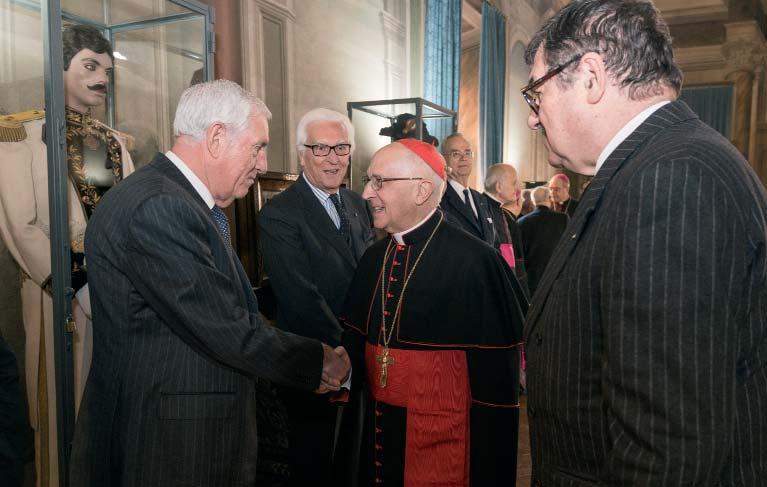
The first major celebration presided over by the ninth Grand Master of the Order
Cardinal Fernando Filoni celebrated Mass on February 1 at the Church of Santo Spirito in Sassia, located in front of Palazzo della Rovere, headquarters of the Grand Magisterium of the Order of the Holy Sepulchre, to begin his mission as Grand Master in prayer.
The high dignitaries of our pontifical institution, the Italian Lieutenants and the Knights and Dames of Rome, many members of the Order and friends gathered around him in the crowded church to entrust the Lord with his ministry and the path of the Order in the coming years.
After the Eucharistic celebration, His Eminence met all the participants in Palazzo della Rovere, greeting each one personally.
Below is the “programmatic” homily pronounced by the Grand Master.
Dear Brothers and Sisters in Christ,
From the first moment of my appointment to lead our Order, I have wished to meet you to pray and ask God for the gift of light and His grace.
Reflecting on our special mission or calling in the Church, my thoughts went to the Gospel passages which narrate the vocation of the disciples of Jesus: in fact, with them he initiated a profound human relationship and the process of their formation and his revelation. In Matthew’s Gospel it is said that the Lord “saw two brothers, Simon called Peter and his brother Andrew... “Come, follow me,” Jesus said, “... Going on from there, he saw two other brothers, James son of Zebedee and his brother John. Jesus called them, and immediately they left the boat and their father and followed him.”(Mt 4:18-19.21.23); And Jesus “saw a man named Matthew sitting at the tax collector’s booth. “Follow me,” he told him, and Matthew got up and followed him.”(Mt 9:9). Jesus encounters them each where life has placed them and they have exchanged gazes forever.
Therefore, I like to think that our call to the Order of the Holy Sepulchre of Jerusalem is the result of an encounter and a call in which we have been, so to speak, scrutinized and chosen; just as Mary of Magdala at the empty sepulchre; there the gaze and the unmistakable voice of the risen Jesus immediately led her to cry out: “Rabboni!” (which
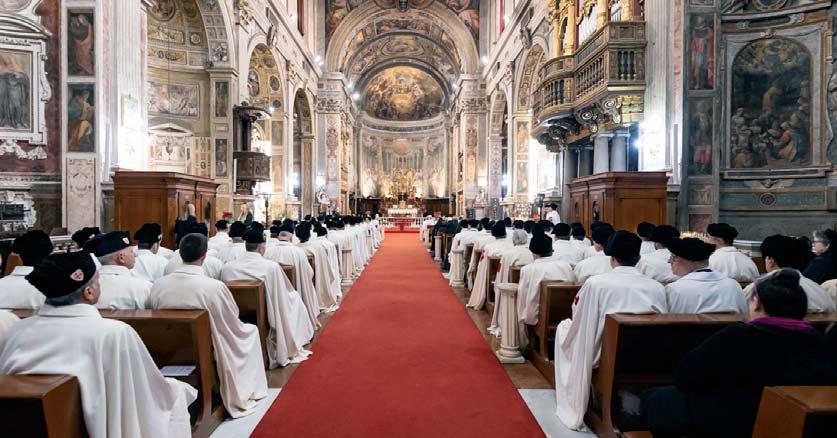
There were numerous Knights and Dames who came to pray around the new Grand Master, on February 1, 2020, in the church of Santo Spirito in Sassia, in front of the headquarters of the Grand Magisterium.
means “Teacher”); yes, he was not the gardener, but the living Master! (cf Jn 20:14-17). But what restlessness, what agitation of the heart and mind!
The same may be said of Paul – while going to Damascus to arrest Christians – was closely scrutinized by the Lord; from that interior experience, from that encounter with the Risen One, he, the persecutor, perceived the grace and obtained the force that changed his life, becoming the greatest preacher among the pagans.
Dear Dames and Knights of the Holy Sepulchre, the thought that each one has been looked upon and loved by the Lord at a particular moment in our life and that his gaze has marked our hearts, allows us to reflect on the sense of our belonging to the Order.
We belong to it not by inheritance of family or class, but because we are called by the One who became the watershed in human history; the “empty sepulchre” we could say, is the point and place where two stories meet: the story of the ‘ignominious’ and ‘unjust’ end inflicted on a man who had done good, but who had become cumbersome in the eyes of religious leaders and the power of Rome, and the story of Peter, John, Mary of Magdala and others who saw his empty tomb, but above all recognized the risen Jesus. This story continues to us; it has not been exhausted.
In front of that empty sepulchre and the encounter with the living Christ, the greatest transformation of humanity had occurred and unthinkable scenarios were opened up regarding the coexistence between peoples, social relationships, the dimensions of the spirit, the meaning of our existence. History would never be the same again. Human beings found themselves judged by the mystery of the cross and resurrection: love was redefined, good and evil knew their clear point of separation, grace and truth, shown in Christ, revealed the merciful face of God (cf. Jn 1:17-18).
With the discovery of the empty sepulchre, which had aroused amazement and dismay, and then in the encounter with the Risen One, who restored inner peace and brought immense joy (cf. Jn 20:20), the adventure of the ‘Christian’ faith began.
It is still useful for us to listen again to the strong testimony of Peter and the other Disciples, who cry incredulously to Thomas: “We have seen the Lord!” (Jn 20:29-25); it is precisely from his disbelief, in which humiliation and faith were intertwined, the last beatitude of Jesus was born that will accompany the life of every believer: “Blessed are those who have not seen and yet have believed!” (Jn 20:29).
It is with the same faith, humble and reassuring in the Risen One, that, in harmony with today’s Gospel, we would then like to enter the boat of which the Gospel speaks; we are not referring here to a material boat, rather to the boat of life’s journey that navigates in the
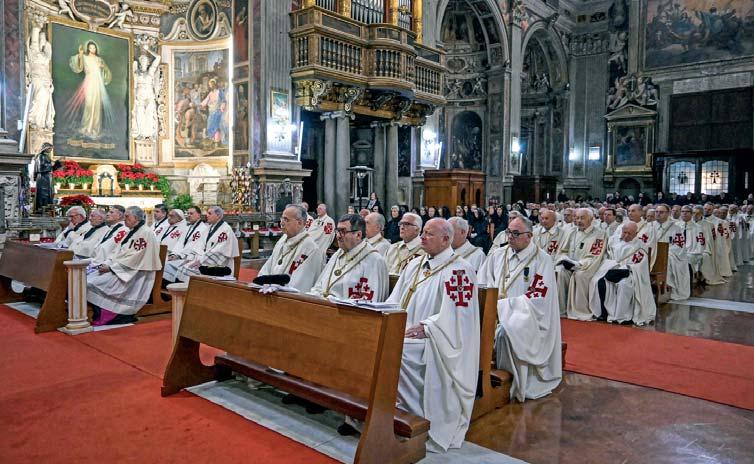
“As Dames and Knights of the Holy Sepulchre of Jerusalem, we set out from the same place where Peter, John, Mary of Magdala and the others set out for the world; that is, from that empty sepulchre and from the encounter with Christ, our hope and our intimate joy, we know that He gives meaning to our existence and we will be witnesses of the living Lord”, declared Cardinal Filoni during his first mass celebrated publicly as Grand Master.
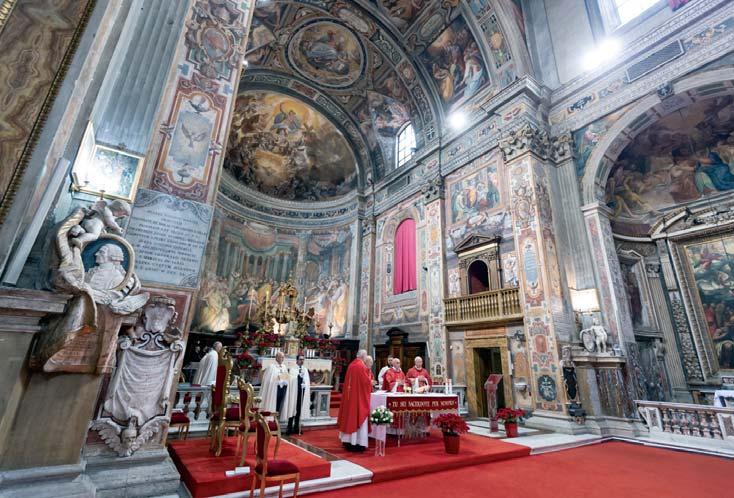
restless waters of the heart and mind: it does not matter if in navigating our lives there will sometimes be a boring calm and it appears meaningless; it does not matter if we are shaken as if by a storm due to an impetuous and destructive wind; it does not even matter if sometimes it seems that the boat is about to capsize or fill up with water, while fear would lead us to cry out: “Teacher do you not care if we drown?” (Mk 4:38), if the Risen One is with us.
Having the Risen One in the little boat of our life or in the big boat of the Church, knowing that He has promised to protect us from the evil one (cf. Jn 17:15) and in truth (cf. Jn 17:17), this is a guarantee for us and certainty that at the right moment Jesus will threaten the waves and will cry to the wind: “Quiet! Be still” (Mk 4:39).
As Dames and Knights of the Holy Sepulchre of Jerusalem, we set out from the same place where Peter, John, Mary of Magdala and the others set out for the world; that is, from that empty sepulchre and from the encounter with Christ, our hope and our intimate joy, we know that He gives meaning to our existence and we will be witnesses of the living Lord.
My most cordial greetings, my gratitude and my prayer, to all of you present here, and to all the great family of Dames and Knights of the world. The purpose of our existence in the life of the Church, consolidated several times by the Supreme Pontiffs, is to ensure that the Gospel continues to resonate in the Land where there are many sacred places, and that the work of charity, support for cultural and social institutions and defence of the
“We must never forget that charity and solidarity qualify the Equestrian Order of the Holy Sepulchre and we are honored to have them as our characteristics in favour of the Patriarchal Church of Jerusalem” (Cardinal Fernando Filoni).
rights of those who live there remain alive.
These aims guide us back to the New Testament root of our commitment in the Holy Land. We know that the first Christians of Antioch, due to the serious famine that occurred between 49-50, “under the empire of Claudius”, with commendable zeal “decided to provide help for the brothers and sisters living in Judea. This they did, sending their gift to the elders by Barnabas and Saul.” (Acts 11:27-30). It was a gesture of high solidarity, nonetheless of those that Paul had also asked of the Churches of Galatia and Corinth (1Cor 16, 1-4) and that offered by the Christians of Macedonia; these, despite “their extreme poverty”, had shown great generosity: “For I testify – writes the Apostle in his second Letter to the Corinthians – that they gave as much as they were able, and even beyond their ability. Entirely on their own, they urgently pleaded with us for the privilege of sharing in this service to the Lord’s people”(2Cor 8:1-6). A splendid attitude to want to take part in the help of Christians in Palestine!
In all those gestures, dear brothers and sisters in Christ, we find – I like to repeat it – the root of our work and the purpose that the Supreme Pontiffs wanted to assign us. We must never forget that charity and solidarity qualify the Equestrian Order of the Holy Sepulchre and we are honoured to have them as our characteristics in favour of the Patriarchal Church of Jerusalem and of the many brothers and sisters in need who live in that Land; A land blessed by the Most High, but also in need of peace.
Thank you for your presence; thank you for your generosity. Thanks for your prayers. May the Blessed Virgin Mary, Queen of Palestine protect you, we entrust ourselves to her, and the Most High bless you. Amen.
The first Investiture presided over by Cardinal Fernando Filoni
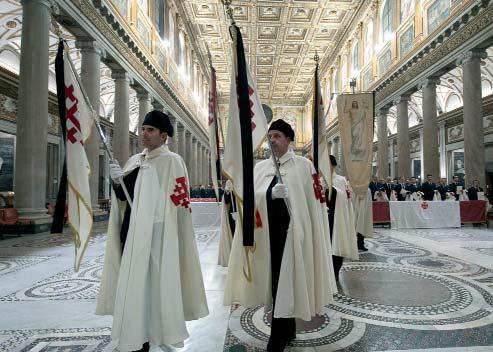
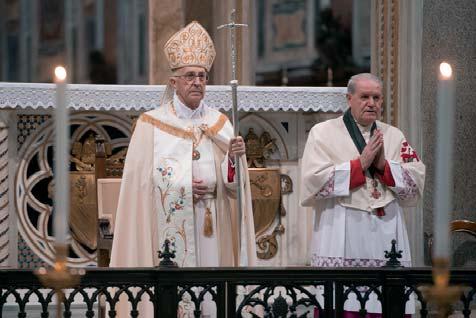
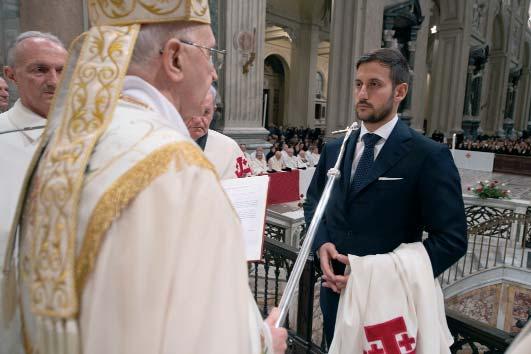
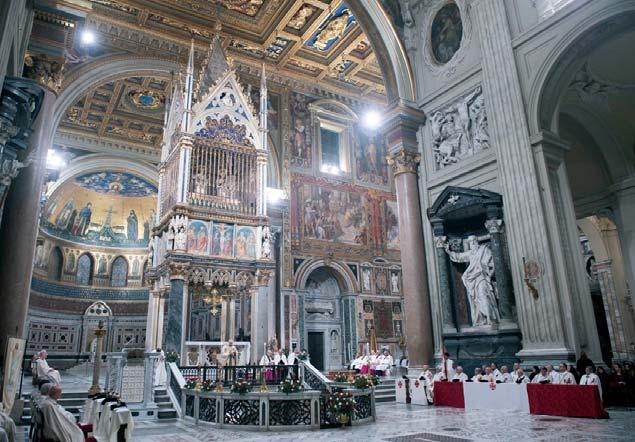
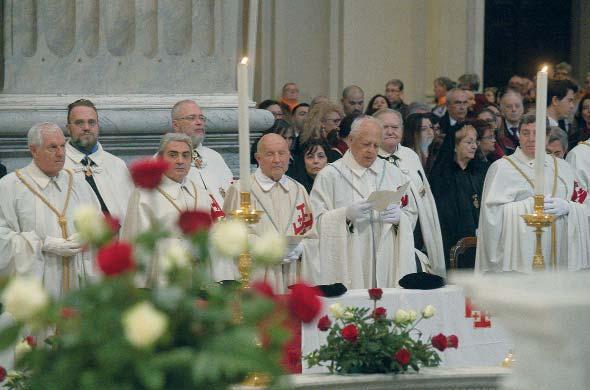
It was in Rome with the Lieutenancy for Central Italy that the new Grand Master celebrated his first Investiture ceremony, choosing on that occasion to use his crosier rather than the sword to focus on the spiritual vocation of the Knights and of the Dames called to follow Christ. (Copyright Osservatore Romano)
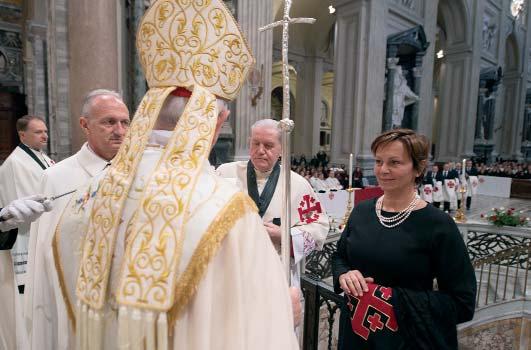
Your Eminence, in what spirit do you undertake this new responsibility as Grand Master of the Order of the Holy Sepulchre, which the Pope entrusted to you on December 8?
In my life of service to the Church, first as assistant parish priest in Rome (nine years), then in the Service of the Apostolic See (almost forty years), I learned to love each reality to which I have been destined. Among these, I cannot fail to highlight the ecclesial missions in the Near East: Iran (at the time of the Iran-Iraq war), Iraq and Jordan (2001-2006). In Jordan, particularly as a territory where the Prophets, Moses, John the Baptist and finally Jesus had preached, I was marked by these unique bonds with Sacred History. I never imagined that I would return to address them with an appointment as head of the Order of the Holy Sepulchre of Jerusalem. It is like returning to a’ love’ that has never been forgotten.
On the day of your appointment, comments on social media referred to the office of Grand Master of the Order as an ‘honorific’ title. How would you like to respond to this statement? More generally, in what way is membership in the Order not simply an honour?
I think the Order of the Holy Sepulchre of Jerusalem develops two dimensions, which remain largely unknown even to the media. The Order undoubtedly has a centuries-old history. Yet not going beyond it is reductive and, in any case, incomplete. Today the Order is a large family of

volunteers (30 thousand), scattered all across the world, who, through their own voluntary contribution, ensure that the Holy Land and the places most sacred to Christianity do not become lifeless museums, rather that they have life. This takes place on two levels: the first is related to the Christians who live there; in this sense, the donations of the Members of the Order go to support poor families, primary and secondary schools, Bethlehem University, health care institutions, and today refugees. The second is to encourage pilgrims from all over the world to visit the most sacred places on pilgrimage and help them receive a suitable welcome. This is in harmony with the Catholic Patriarchate of Jerusalem, which has authority over Israel, Palestine and Jordan. In short, to speak of “honorific order” is misleading.
Your vast experience in the service of the Church is fortunate for the Order, above all because you know the Middle East, having been Nuncio to Jordan, Iraq and Iran. What vivid memories do you have of this part of the world and how do you think the Order can contribute to promoting peace there in the long term?
Peace is the fruit of collaboration between the parties involved. It is frustrating if you work for it and often see it compromised. However, peace is nourished by respect for the rights of all: My thoughts particularly go to the people who live in the Holy Land (but the same can be said for the whole Middle East). The problem begins where prejudices of superiority, lack of historical understanding, rejection of a complex reality that begs patience and dialogue from everyone are allowed to grow. If we think of the legacy of values that unite us, Jews, Muslims and Christians, and not only spiritually, we actually discover how much we are united and first of all the uniqueness of God who, as Father, has revealed himself in this land. A God who does not have preferences (while respecting diversity) and in whose name one cannot fight and kill. The violent wars and enmities that repeatedly bloody the Holy Land (and the Middle East) can never find a justification in God, nor in a Land that primarily belongs to the God of Revelation.
The Order is little known, and sometimes a victim of prejudice, while its mission in favour of the Mother Church in the Holy Land is essential. Eminence, what would you ask of the 30 thousand members of the Order to help communicate a better image of their vocation to holiness and the important service they render to the Church?
Prejudices kill the truth. Not infrequently, they also feed on ignorance. However, it is up to us, in particular to the Members of the Order, to work to diminish them until, hopefully, they disappear. I hope these words will also inspire the desire for better knowledge of the Order of the Holy Sepulchre. I would like to emphasize here that the Order is not accessed through family or social
The life of a Knight and a Dame is “Christological”, that is, centred on the mystery of Jesus, according to the teaching of Saint Paul ( 1Co 15,14). Therefore, the members of the Order commit themselves concretely to the Holy Land in the service of their most fragile and defenceless brothers and sisters.
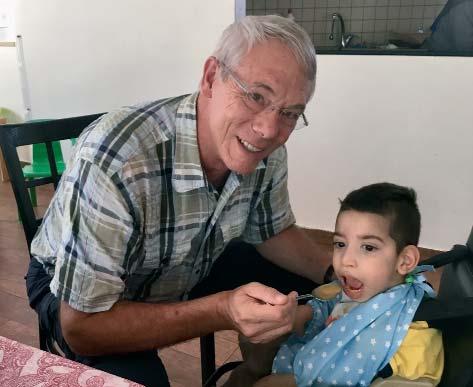

class. Today the Order welcomes people who accept and live the ideal of a Christian life that is rooted in an empty tomb, where the living, risen Jesus is encountered. The life of a Knight and a Dame is “Christological”, that is, centred on the mystery of Jesus, according to the teaching of Saint Paul (1Cor 15:14): “And if Christ has not been raised, our preaching is useless and so is your faith.” In addition, the most significantly concrete
point in their life lies in their participation in supporting places, works and brothers and sisters in need of the Holy Land. The 30 thousand members in the world thus constitute a large family or, if you wish, a large “parish”.
COPYRIGHT GENNARI
The Order is a pontifical institution; therefore, it is intrinsically linked to the Holy See. Which events of ecclesial life would you ask Knights and Dames to be particularly attentive to in order to increasingly walk in communion with the Universal Church?
I will leave aside the ancient historical origins. Indeed, the Order has always had the protection of the Apostolic See so much that in its reconstruction, Pius X (1907) himself wanted to reserve the title of Grand Master of the Order. Then Pius XII (1940) passed the title to a Cardinal, and so it has remained until today. There is therefore an intimate bond between the Apostolic See and the Order. For this reason, in addition to the zeal for the Christian life of its members, in addition to supporting the works of the Holy Land, there is also the principal aim of the propagation of the faith through personal witness and the support of the rights of the Catholic Church in that Region in respect of the rights due to any other entity that favours the peaceful coexistence of all. Therefore, the Order is sensitive to the teachings of the Supreme Pontiff in this Region by developing harmony and support. Interview by François Vayne The members of the Order – who regularly go on pilgrimage to places where Christ died and rose again – fulfil the mission of spreading the faith through personal witness of life, as well as defending the rights of the Catholic Church in the Holy Land.
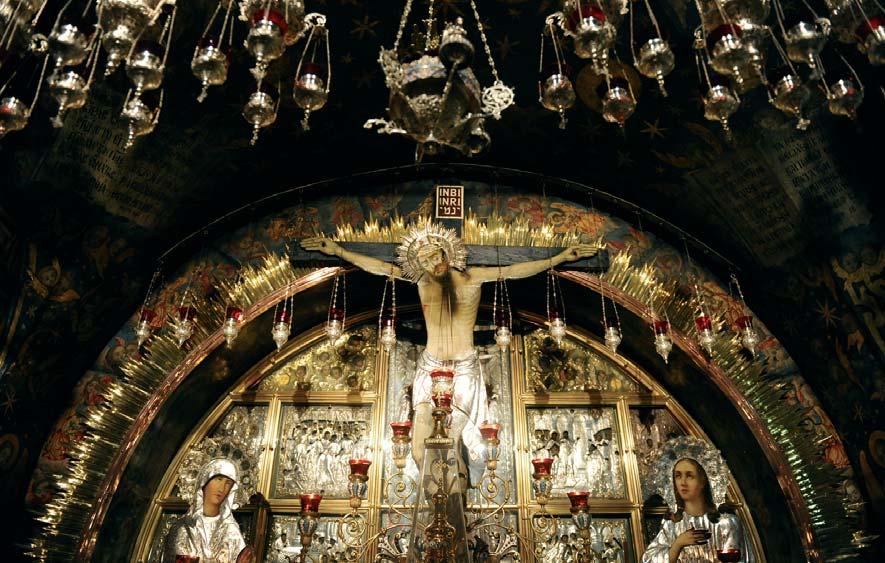
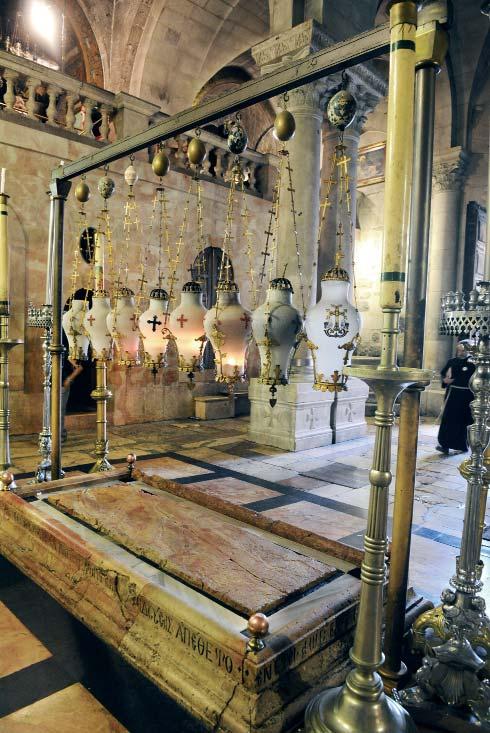
Two new members of the Grand Magisterium
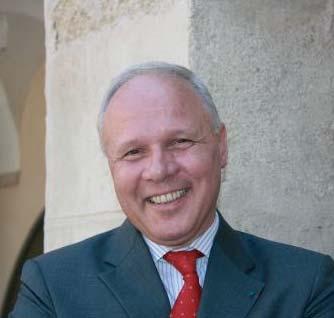

Two new members have been appointed part of the Grand Magisterium, the Grand Master’s international council, which meets twice a year in Rome to discuss current affairs relating to the Order. Italian Leopoldo Torlonia dei Duchi di Poli e Guadagnolo (picture on the left) is president of the “Circolo San Pietro” – an association of solidarity with the poorest, founded in Rome in 1869. Dominique Neckebroeck (picture on the right) is the Chancellor emeritus of the Lieutenancy for France and is very involved in the Order’s projects in the Holy Land. We wish them a fruitful activity, alongside Governor General Leonardo Visconti di Modrone and all those in charge of the Order.
The Cardinal Grand Master appointed Enric
Mas as new Vice Governor General for Central and South America, a newly created role. Mas feels that the keyword of his position is “service”: “Where there are no Lieutenancies it is question of encouraging and where there are Lieutenancies it is question of being at their service providing support,” Mas said.
“Having been a Lieutenant beforehand helps me understand the needs and expectations because the issues Lieutenants deal with have been the same I myself experienced as a Lieutenant,” he continued. The Vice Governor General for Central and South America started his mandate at the end of June 2019 and he sees many opportunities ahead. “Latin America is more than a continent and offers great opportunities of growth in all fields and the Order of the Holy Sepulchre can definitely go on developing there.”
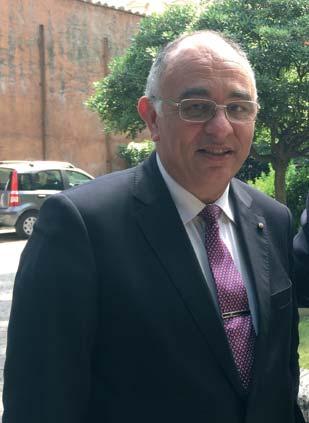
The new Vice Governor General for Central and South America, Enric Mas.










